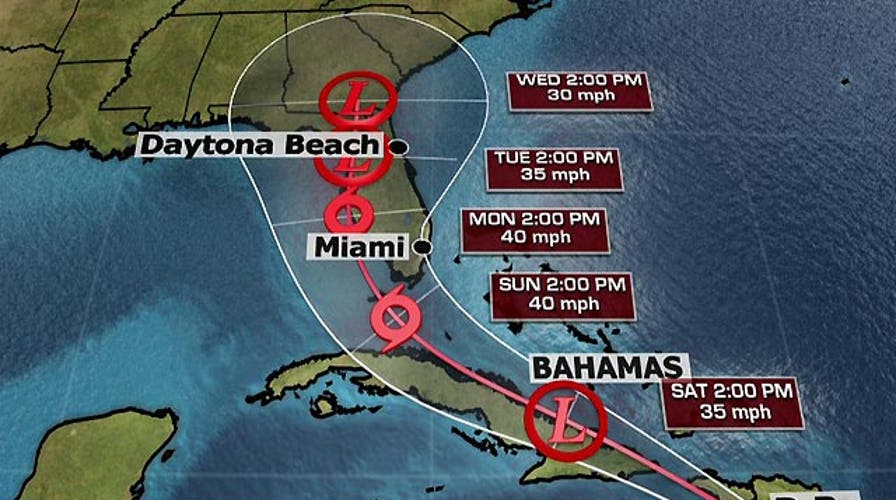Governor Rick Scott of Florida issued a state of emergency Friday as Tropical Storm Erika headed toward the state after killing at least a 20 people and causing devastating floods in the eastern Caribbean island of Dominica, while beginning to lose some strength.
Dominica Prime Minister Roosevelt Skerrit said in a televised address late Friday that the island has been set back 20 years in the damage inflicted by the storm.
"This is a period of national tragedy," he said, adding that hundreds of homes, bridges and roads have been destroyed. "We have, in essence, to rebuild Dominica."
Tropical Storm Erika dumped 15 inches of rain on the mountainous island before it cut Friday into Haiti and the Dominican Republic, where it topped trees and power lines.
The U.S. National Hurricane Center in Miami said the system was expected to move north across the island of Hispaniola where the high mountains would weaken it to a tropical depression on Saturday, and possibly cause it to dissipate entirely.
Weather officials said there is still a chance the storm could regain some strength off northern Cuba and people in Florida should still keep an eye on it and brace for heavy rain, according to John Cagialosi, a hurricane specialist at the center.
"This is a potentially heavy rain event for a large part of the state," he told the Associated Press.
Scott used a brief press conference Friday to remind locals to stock up on supplies, including at least three days' worth of food and water.
"Stay up with what’s going on. Follow the local news. Listen to your local elected officials. Stay prepared," Scott said. "Think about your children, your grandchildren and your parents, your siblings, and think about friends who might have needs."
Across the region people heeded the governor's warning. WSVN reported a steady stream of customers were purchasing necessities at grocery stores and taking out extra cash from ATMs, just in case. One grocery store manager told the station that the store had 30 pallets of water ready to be sold, while another said he restocked shelves seven times between noon and 5 p.m. Wednesday in anticipation of the rush.
"Well, just got the last couple of cases of water," customer Ted Jimenez told the station, "got plenty of food, a freezer full of food, two generators, hurricane impact windows. We even got a propane stove."
Shayla Abood, a 35-year South Florida resident, was filling up her gas tank ahead of the storm.
"I'd say I'm like 60 percent concerned. I think the least that we're going to have is a tropical storm," she said.
In Broward County, just north of Miami, the cities of Hollywood and Hallandale Beach announced they would distribute sandbags Friday and Saturday to residents concerned about possible flooding. Water officials said workers had begun setting up pump stations in Hollywood to keep water levels low ahead of the storm surge.
"We can't wait until we see where it's actually going to hit," Jeff Kivett of the South Florida Water Management District told WSVN, "so we started our preparations."
Other cities, such as North Miami Beach began work to keep storm drains clear ahead of the expected deluge. Public works trucks were sweeping and cleaning the streets Thursday, while other crews trimmed trees and uprooted coconut palms.
The exact track of Erika still remains unclear. As of Friday evening, the storm was about 95 miles west-southwest of Santo Domingo, Dominican Republic, and was moving west at about 21 mph with maximum sustained winds of 50 mph, according to the U.S. National Hurricane Center in Miami.
Forecasters said Erika might fall apart over Hispaniola. The catch is that if the storm weakens as it passes over Hispaniola, which is constituted by Haiti and the Dominican Republic, that could leave it susceptible to trade winds that would push Erika directly in line with South Florida.
The Associated Press contributed to this report.


